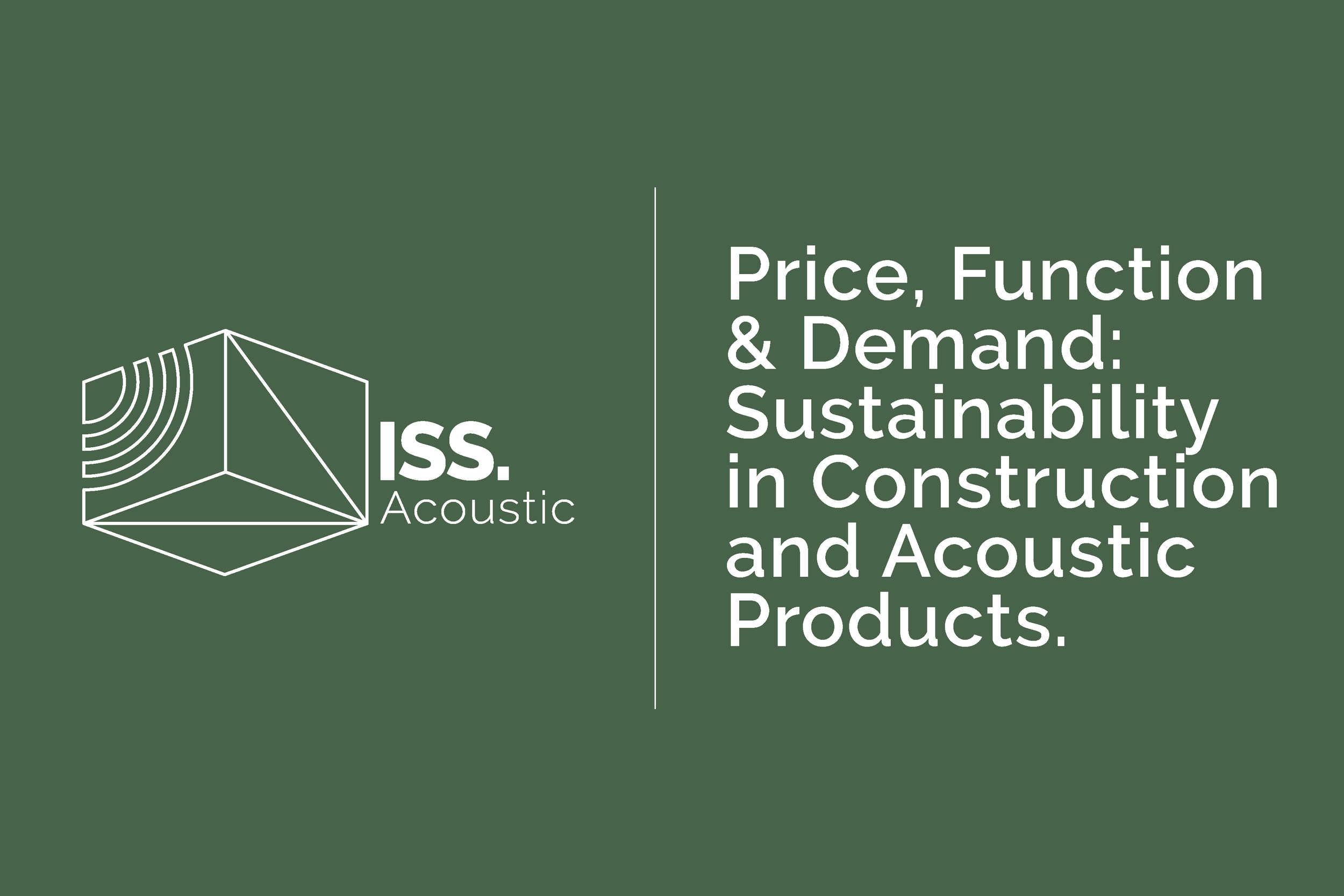Price, Function & Demand: Sustainability in Construction and Acoustic Products.
The construction industry is a fast paced, fast moving industry that is attempting to make a step forward into a more sustainable position. The demand for more sustainable products within the industry is gradually rising, but thats without its hold backs. Creating a sustainable product isn't as easy job, but the benefits can be widely appreciated for the years to come.
Firstly let's have a look at the issues faced within sustainability throughout construction industry.
Issues within the Industry:
The primary hurdle manufacturers and contractors face in integrating sustainability into their products and services is price, function and demand. The question persists: can the function of sustainable materials surpass that of conventional, less environmentally friendly alternatives, and will the price be competitive enough to entice consumers and clients to choose the sustainable alternative? Is the demand tipping in favour for eco builds and products and are we doing enough in the construction industry to meet that demand.
The World Green Building Trends 2018 Smart Market Report has stated that almost 40% of UK firms reported that affordability was the greatest challenge presented by adopting sustainable construction practices.
While the long-term benefits of sustainable building, including cost savings through reduced carbon emissions and increased energy efficiency, are well-acknowledged, the initial challenge lies in the upfront cost for a lot of industry contractors. As awareness of sustainability grows, so does the demand for eco-friendly options, marking a positive shift in the industry. However, the inevitable question that arises is the cost. Companies, understandably, are cautious about losing projects by setting prices too high when incorporating sustainable options. Striking a balance between providing sustainable solutions and ensuring competitiveness in pricing becomes crucial in meeting the rising demand for environmentally conscious construction practices.
Adopting sustainable construction methods is not an overnight process. The clients’ values and available budget will be the most significant constraint or enabling factor.
Sustainable Materials and their Benefits:
There are a multitude of benefits when adopting sustainable practices within any industry. Acoustic design and manufacturing is no different. The full life cycle of a product can be improved through three different but equally as important ways.
Environmental Benefits:
- Energy Efficiency
- Reduced Carbon Footprint
- Waste Reduction
Emphasis on recycled and sustainable materials help conserve energy, will minimising the impact on natural resources as well as leads to lower carbon emissions during
Health and Well-being:
- Improved Indoor Air Quality
- Noise Reduction for Stress Reduction
- Enhanced Comfort and Productivity
Improved air quality is often a missed attribute when thinking about materials. Conventional Acoustic panels use a condensed fibreglass internal which does pose some challenges. Choosing a more sustainable product with lower emissions enhances indoor air quality and positively impacts the health of the occupant.
A lot of sustainable products boast high acoustic value including natural fibres like wool and recycled cotton. Using high functioning materials will be more effective in reducing noise pollution, thus creating better overall comfort in spaces benefitting in a less stressful environment, improved mental health and better productivity.
Economic Advantages
- Market Value and Tenant Satisfaction
- Long-Term Cost Savings
It's a well-established fact that sustainable buildings yield long-term cost savings. Although sustainable materials may involve higher initial expenses on occasion, their superior durability and longevity make them a sound financial choice. This is primarily due to the reduced need for future material replacements. Consequently, sustainable buildings often command higher market value and appeal to both conventional and environmentally conscious markets.
Sustainable materials are undoubtedly the future of construction. But, since cost is a big concern within the industry, the real question is: when will the demand make sustainable products that are both cost effective and high functioning more accessible?
As a company that deals with acoustic solutions, we've mostly used fiberglass for our panels. However, we're now shifting towards more sustainable options. Our focus is on incorporating materials that offer both high functionality and, ideally, reduced costs in the future. The abundance of sustainable options in the market, ranging from wool to recycled plastic for insulation and absorption materials, has been remarkable, and it doesn’t stop there.
Other choices include:
Recycled Cotton (Denim) Insulation:
Insulation made from recycled denim or cotton is gaining popularity. It is typically composed of post-industrial and post-consumer recycled denim scraps. This type of insulation is known for being safe, effective, and environmentally friendly.
Recycled Cellulose Insulation:
Cellulose insulation is made from recycled paper, often sourced from old newspapers and cardboard. The paper is treated with fire-retardant chemicals to enhance its resistance to flames. Cellulose insulation is commonly used in wall cavities and attics.
Recycled Wool Insulation:
Some insulation materials are made from recycled wool, usually sourced from discarded textiles or manufacturing waste. This type of insulation is biodegradable, renewable, and offers good thermal performance.
Recycled Plastic Insulation:
Certain insulation products are made from recycled plastic, such as PET (polyethylene terephthalate) commonly found in water bottles. The plastic is melted down and turned into fibers or foam boards used for insulation.
In conclusion, the sustainability market in construction and acoustic solutions is on a growth trajectory, poised to increasingly favour environmentally friendly products and materials in the construction industry. As demand continues to rise, accessibility to sustainable options will also expand. While the timeframe for environmental change to take a positive effect may be relatively small, the movement is heading in the right direction.
Below youll find a comparison video between sheep and hemp wool in terms of insulation

